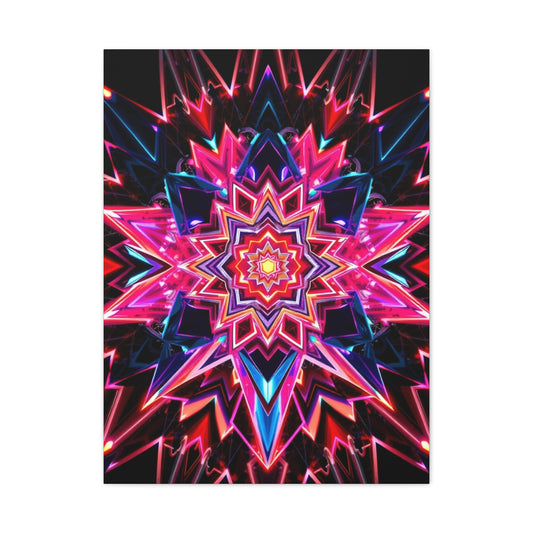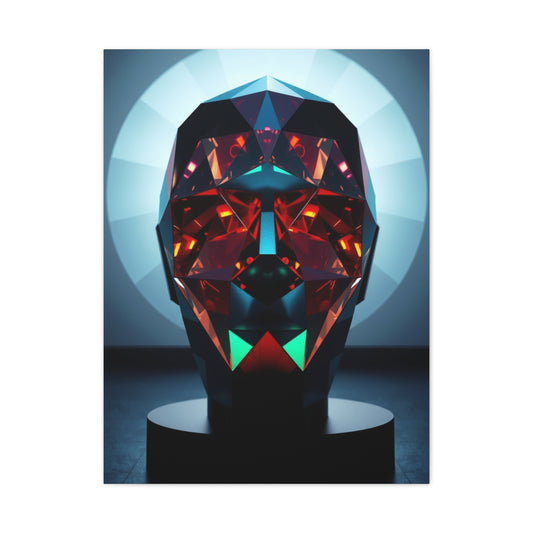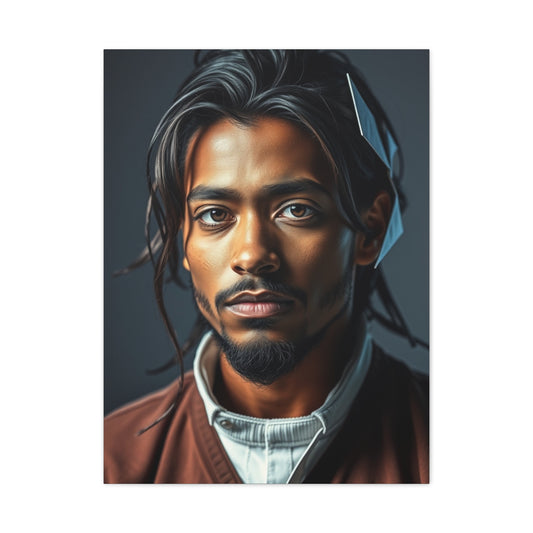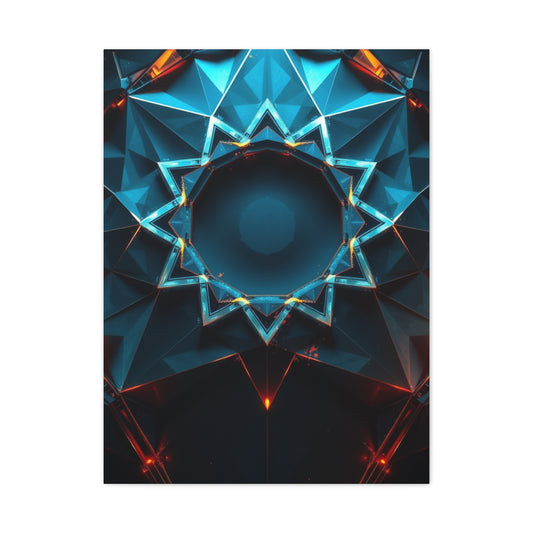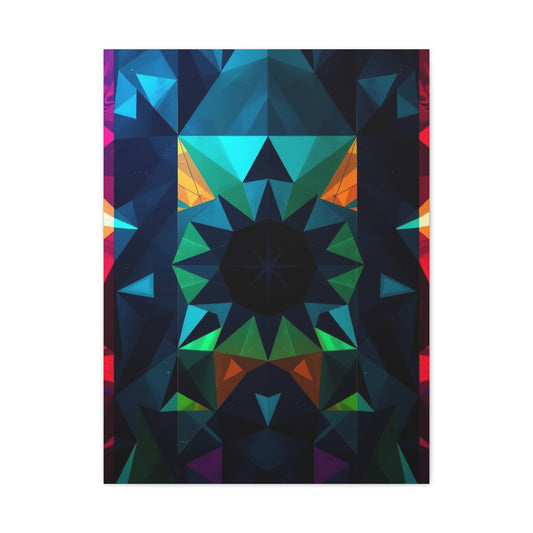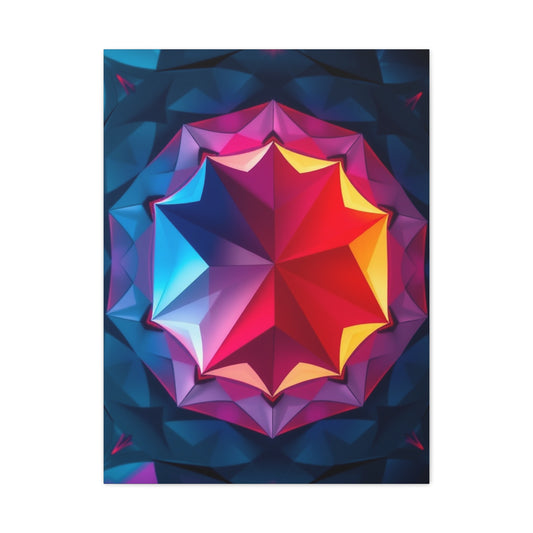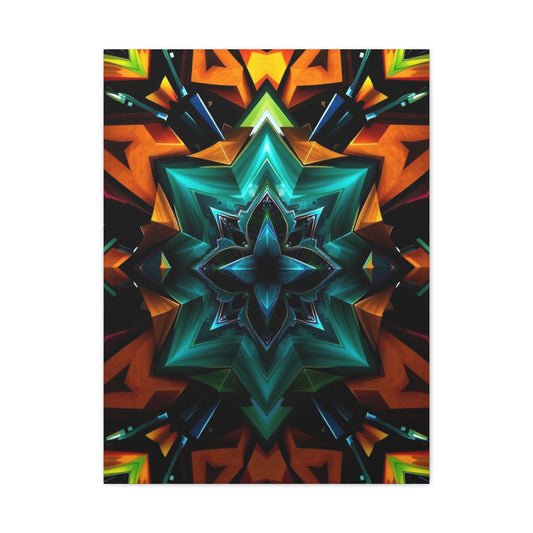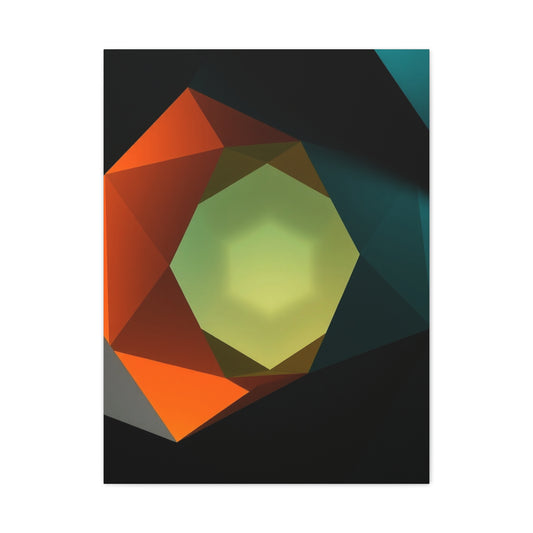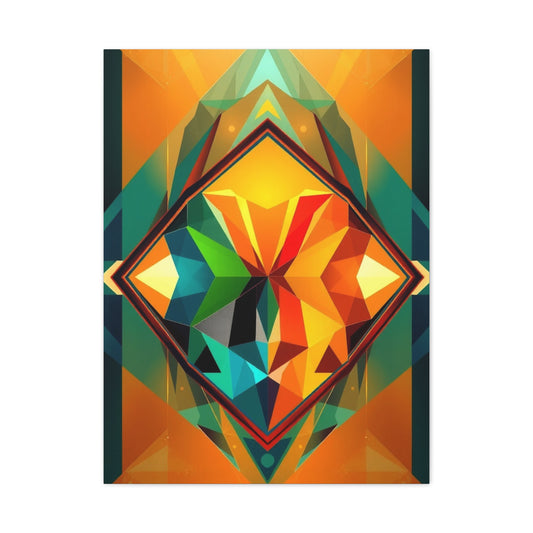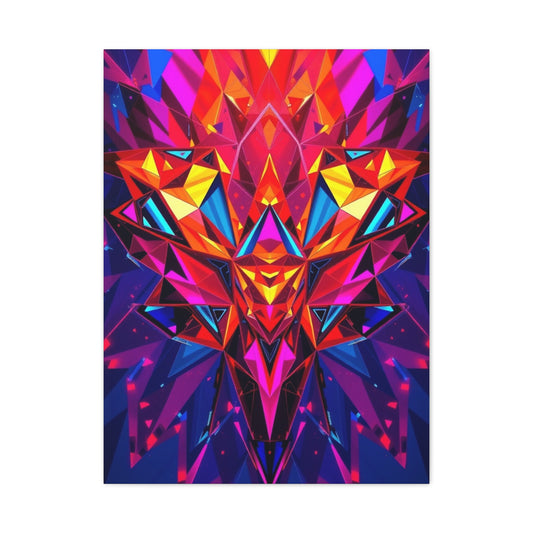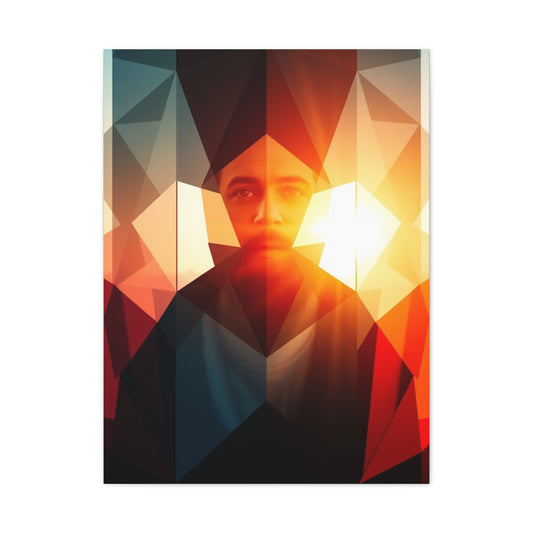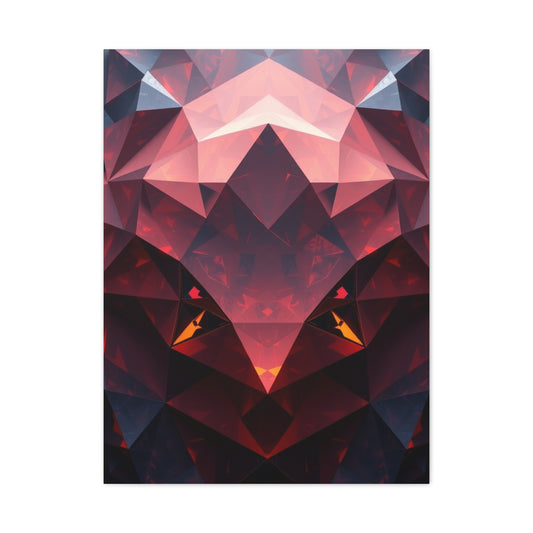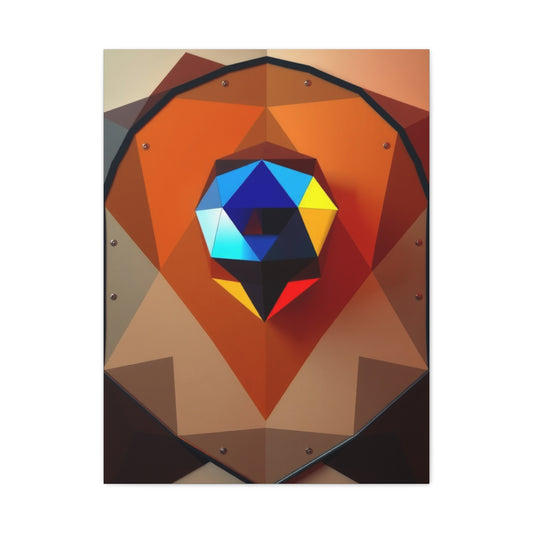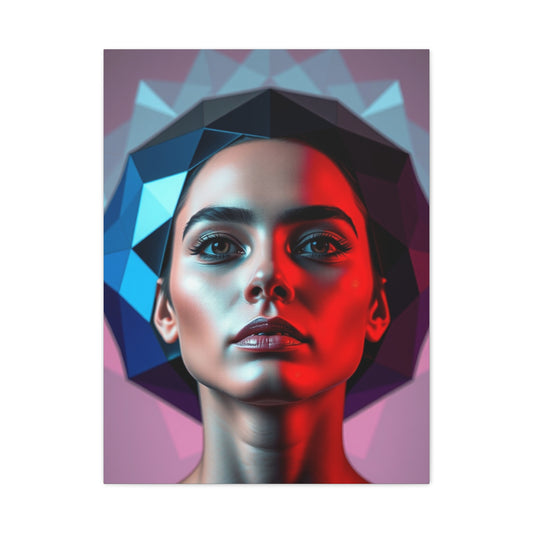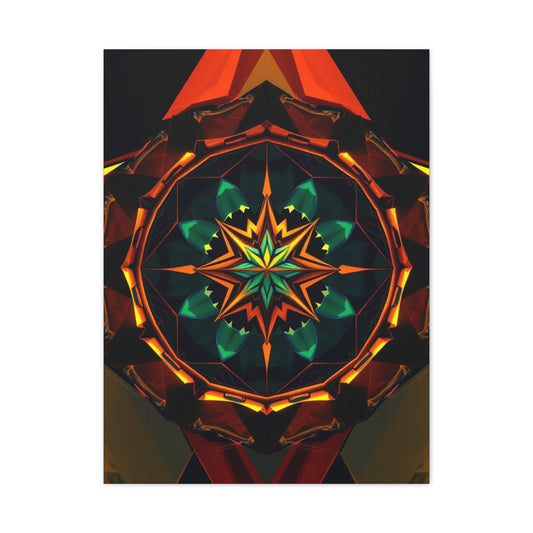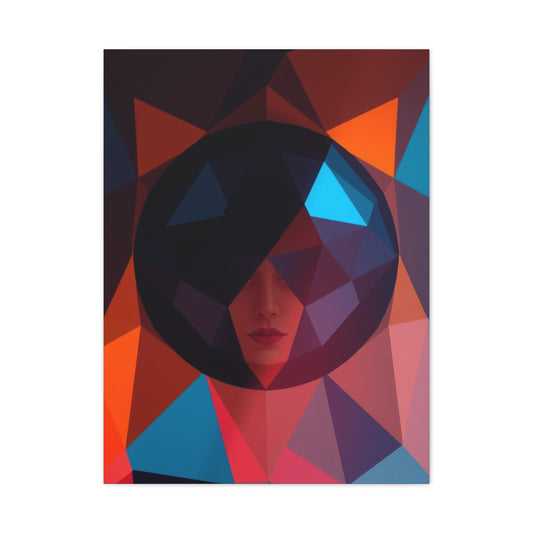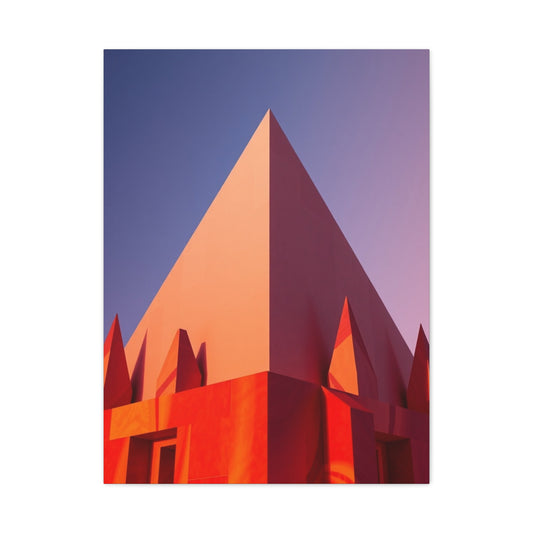Innovative Geometric Wall Art for Contemporary Homes
Geometric wall art has become an emblem of modern interior design, effortlessly merging the rigor of mathematical precision with the fluidity of artistic expression. This distinctive form of art captures attention with its elegant balance of simplicity and intricacy, offering a visual language that resonates deeply with both minimalists and those who gravitate toward eclectic decor. In contemporary spaces, geometric designs have transcended mere decoration; they have evolved into instruments for creating emotional resonance, spatial harmony, and aesthetic cohesion.
The primary appeal of geometric wall art lies in its ability to introduce structure and rhythm into a room. Human cognition is innately attuned to symmetry, pattern, and order, and geometric compositions leverage this inclination to evoke a sense of balance. Circles, triangles, squares, and rectangles are not merely shapes; they are foundational units that, when orchestrated thoughtfully, produce a visual symphony. This orchestration can manifest in minimalistic compositions that whisper elegance, or in intricate patterns that pulse with energy and movement. The versatility of geometric wall art allows it to inhabit both quiet corners of a home and grand, commanding walls in living areas.
The Versatility of Geometric Design in Modern Interiors
One of the most compelling characteristics of geometric wall art is its adaptability across diverse interior design styles. In ultramodern spaces characterized by stark lines and restrained color palettes, geometric pieces often serve as focal points, anchoring the room while injecting personality. A large canvas featuring interlocking polygons or a cascade of triangles can dominate a wall, providing an intellectual yet visually arresting centerpiece. Conversely, in more eclectic or traditionally furnished rooms, smaller geometric prints can introduce contemporary flair without disrupting the underlying aesthetic. The juxtaposition of geometric clarity against ornate or classical furniture can generate a dialogue between eras, enriching the visual narrative of the space.
Color plays a pivotal role in the efficacy of geometric wall art. Monochromatic schemes exude sophistication and quiet elegance, allowing form and composition to remain the focal point. On the other hand, vivid and audacious color choices can transform a room, infusing it with dynamism and vitality. Warm colors such as amber, vermilion, and burnt sienna animate spaces, stimulating conversation and activity, while cooler tones like cerulean, mint, and lavender foster serenity and contemplation. The interplay of color and form is not merely decorative; it shapes perception, affects mood, and guides the flow of energy within a room.
Creating Depth and Dimension with Geometric Patterns
Geometric wall art is not limited to flat, two-dimensional expression. Strategic arrangement of shapes and lines can simulate depth, motion, and three-dimensionality. The human eye perceives layered compositions and interlocking shapes as dynamic, creating illusions of space where none exists. This capacity to manipulate perception allows designers to make compact rooms feel expansive or to add a sense of rhythm to otherwise static walls. Optical illusions crafted through geometric patterns invite prolonged observation, as the viewer’s attention oscillates between foreground and background, plane and recess.
The tactile dimension of geometric art further enhances its allure. Three-dimensional wall sculptures, often constructed from metal, wood, or modern composite materials, engage viewers not only visually but physically. Shadows cast by protruding elements shift throughout the day, altering the appearance of the piece and infusing the room with a living, mutable quality. Even within two-dimensional works, layering paint or employing textural techniques can create subtle reliefs that suggest motion and complexity.
Personalization and Emotional Resonance in Geometric Art
A growing trend in contemporary interiors is personalization—transforming living spaces into reflections of individual taste and identity. Geometric wall art excels in this domain, offering opportunities for bespoke creations that resonate with personal narratives. Customized pieces, whether commissioned or self-curated, allow homeowners to select shapes, colors, and scales that align with their vision for the space. This level of personalization ensures that geometric art functions not only as decoration but also as an intimate statement of style and sensibility.
The psychological effects of geometric compositions are profound. Circles and curves evoke unity and harmony, fostering feelings of completeness and continuity. Squares and rectangles communicate stability and dependability, lending a sense of order to rooms designed for focus or relaxation. Triangles, with their dynamic angles, suggest movement and progression, energizing spaces intended for creativity or social interaction. More intricate polygons and tessellations can inspire contemplation and visual exploration, making geometric art a medium that engages the mind as well as the senses.
The Role of Geometric Art in Interior Cohesion
Geometric wall art often serves as a connective thread within a room’s overall design. When integrated with complementary elements—such as rugs, throw pillows, or furniture with subtle geometric motifs—it establishes visual coherence and rhythm. This deliberate repetition of pattern and form fosters unity, guiding the observer’s eye seamlessly through the space. Unlike transient trends, the fundamental principles of geometry remain timeless, ensuring that such artworks continue to resonate aesthetically across years and stylistic evolutions.
Beyond purely visual cohesion, geometric art contributes to spatial psychology. By manipulating scale, orientation, and repetition, designers can influence how occupants perceive the size and structure of a room. Large, bold patterns can make ceilings appear higher and walls broader, while intricate, delicate patterns encourage closer inspection and a sense of intimacy. The strategic deployment of geometric elements thus enhances both the functional and emotional experience of interior environments.
Materials and Mediums for Geometric Wall Art
Geometric wall art is distinguished not only by its design but also by the diversity of materials and mediums in which it is executed. Canvas remains a classic choice, lending itself to fluid paint application and precise lines, whether rendered in acrylics or oils. Prints on canvas offer an accessible alternative, translating digital or hand-drawn compositions into physical form without sacrificing clarity or vibrancy.
Metal wall art introduces a contemporary and industrial sensibility. Sculptural pieces in steel, aluminum, or brass frequently employ layering, cutouts, and reflective surfaces to accentuate depth and texture. The interaction of metal with natural or artificial light animates the space, adding kinetic energy to static walls. Similarly, wooden geometric compositions provide warmth and tactile appeal, ranging from minimalist laser-cut forms to meticulously assembled mosaics. The natural grains and hues of wood enrich the visual experience, offering organic contrast to the clean precision of geometric shapes.
Three-dimensional sculptures expand the expressive potential of geometric art. These works may protrude from walls or occupy corner spaces, engaging viewers from multiple vantage points. Shadows, angles, and light interplay imbue the room with a shifting visual landscape that evolves throughout the day. Textiles and fabric art, including tapestries and framed geometric quilts, introduce softness and tactility, allowing geometric design to permeate spaces with a humanizing warmth. Glass and mirror art, meanwhile, exploits reflection and transparency, creating a luminous focal point that amplifies light and spatial perception.
The Interplay of Geometry and Color Theory
An understanding of color theory elevates geometric wall art from aesthetic embellishment to an instrument for shaping mood and perception. Colors carry emotional weight; their pairing with geometric forms can generate harmony, tension, or emphasis. Complementary colors, positioned according to the principles of the color wheel, engender balance, whereas contrasting shades provoke visual dynamism. Monochromatic arrangements provide subtle elegance, allowing the structure of the composition to dominate the visual narrative, while vibrant palettes energize the environment.
Color interacts with geometric form to guide perception. Light, airy tones expand visual boundaries, while dark, saturated colors encourage introspection and intimacy. The juxtaposition of warm and cool colors in tessellated patterns can simultaneously animate and soothe, depending on the intended ambiance of the space. When thoughtfully combined with shape, color transforms geometric art into a silent yet potent orchestrator of emotional experience within interiors.
Cultural and Historical Inspirations in Geometric Design
Modern geometric wall art is enriched by cultural and historical precedents. Islamic geometric patterns, revered for their intricate symmetry and spiritual symbolism, have profoundly influenced contemporary interpretations, lending sophistication and meticulous craftsmanship. African textiles, with bold repetitive forms and vibrant chromatic choices, inspire dynamic, energetic compositions. Native American and other indigenous motifs infuse geometric works with symbolic meaning, bridging artistic expression with cultural heritage. Asian aesthetics, particularly Japanese minimalism and Chinese lattice patterns, contribute refined structural clarity, emphasizing negative space and disciplined composition.
By integrating traditional motifs with contemporary sensibilities, geometric wall art transcends mere decoration. It becomes a conduit for storytelling, connecting interior spaces with global artistic legacies and imbuing rooms with layered cultural resonance. This cross-pollination of historical and modern influences enriches both the visual and emotional fabric of interior design.
Diverse Themes in Geometric Wall Art
Geometric art is not monolithic; it spans a plethora of themes and conceptual frameworks. Mandalas, with their concentric, meditative designs, are both geometric and spiritually evocative. Abstract geometry employs simple or overlapping forms to create dynamic visual statements. Optical illusion art manipulates perspective and perception, engaging viewers cognitively. Three-dimensional geometric pieces, fractal designs, and nature-inspired motifs demonstrate the adaptability of geometric principles across medium and intentions. Minimalist compositions highlight the purity of form and color, while pop art-inspired geometric pieces embrace boldness and playfulness. Mathematical or sacred geometry explores the intersection of proportion, philosophy, and aesthetic contemplation, offering deeper symbolic resonance.
Each thematic approach presents unique opportunities to shape interiors, whether to create tranquility, stimulate creativity, or convey conceptual sophistication. The multiplicity of styles ensures that geometric wall art can be tailored to virtually any design objective, harmonizing form, color, and emotional impact.
Materials and Mediums in Geometric Wall Art
Geometric wall art thrives not only in its visual composition but also through the diversity of materials used in its creation. The medium shapes not only the aesthetic but also the emotional and tactile experience of the piece, providing designers with a palette as varied as the geometric forms themselves. Each material conveys a distinct ambiance and interacts with light, space, and texture in unique ways.
Canvas remains a classic and versatile medium for geometric art. The smooth, absorbent surface allows for precise lines and vibrant colors, whether executed with oils, acrylics, or mixed medium. Canvas paintings often employ layering techniques to produce depth, with overlapping shapes or varying tonal gradients creating subtle visual movement. Prints on canvas expand accessibility, transforming digital geometric compositions into tangible art that retains clarity and vibrancy while allowing for large-scale experimentation. Minimalist designs in black and white showcase structural purity, while multi-colored arrangements energize spaces and evoke a lively atmosphere.
Metal geometric art introduces a contemporary and industrial dimension. Crafted from steel, aluminum, brass, or copper, metal pieces can be layered, cut, or bent into intricate interlocking patterns. Reflective surfaces respond dynamically to natural or artificial light, producing shifting highlights and shadows that give the piece a living quality. Metal art often emphasizes line precision and negative space, allowing the geometric composition to breathe while establishing a commanding presence on the wall. Its modern, sleek aesthetic makes it particularly suitable for minimalist, industrial, or urban-inspired interiors.
Wooden geometric wall art, in contrast, offers warmth and tactility. By utilizing natural grains, stains, and textures, wooden designs integrate the organic and geometric, creating compositions that feel both grounded and sophisticated. Techniques vary from laser-cut minimalistic shapes to hand-assembled mosaics, where individual wooden elements interlock to form intricate tessellations. Wooden pieces are particularly effective in Scandinavian or rustic interiors, where their natural appeal complements a subdued color palette while maintaining the intellectual rigor of geometric design.
Three-dimensional geometric sculptures elevate wall art into the spatial realm. These pieces, often constructed from metal, wood, acrylic, or composite materials, extend beyond the flat plane, interacting with light and shadow in unpredictable ways. The three-dimensionality produces an ever-changing visual experience, with angles, protrusions, and recesses altering perception as viewers move through the room. In expansive spaces, 3D sculptures function as commanding focal points, drawing attention and inviting tactile engagement.
Glass and mirror geometric art further enhances the interplay of light and space. Stained or cut glass introduces translucency and color modulation, while mirrors reflect the surrounding environment, expanding visual boundaries. Geometric mirrors with segmented or asymmetrical designs not only serve as functional elements but also as sculptural statements, amplifying light and creating an illusion of greater depth. These pieces excel in smaller rooms or areas with limited natural light, where their reflective qualities can dramatically alter the ambiance.
Textiles and fabric-based geometric art provide a softer, more intimate dimension. Tapestries, quilted wall hangings, and framed geometric fabric panels introduce texture and warmth while maintaining structural elegance. The tactile appeal of fabric contrasts with rigid geometric precision, creating a dynamic interplay that encourages closer engagement. The medium is ideal for bedrooms, lounges, or any area where sensory comfort is desired alongside visual interest.
The Psychological Impact of Geometric Shapes
Geometric wall art is not merely a visual statement; it actively engages human perception and emotion. Shapes carry intrinsic psychological associations that influence how a space is experienced. Understanding these associations allows designers to harness geometry as a tool for shaping mood, behavior, and spatial awareness.
Circles and curves evoke harmony, unity, and completeness. They soften the rigidity often associated with contemporary design and foster a sense of continuity. Circular motifs in wall art can create a tranquil, inviting environment, making them ideal for bedrooms, meditation spaces, or communal areas where relaxation is encouraged. Curved geometric patterns also introduce a naturalistic element, referencing organic forms without abandoning structural discipline.
Squares and rectangles communicate stability, reliability, and order. Their predictable angles and straight lines convey structure, organization, and dependability, which can be psychologically reassuring in workspaces or study areas. Incorporating these shapes in repeated patterns or tessellations enhances a sense of rhythm and predictability, which may contribute to mental clarity and focus.
Triangles and angular forms are associated with movement, energy, and progression. Their pointed apexes suggest directionality, tension, and dynamism. Triangular compositions in geometric wall art can stimulate creativity and encourage active engagement with a space. When used strategically, triangles draw the eye along intended visual paths, establishing a subtle narrative within the composition.
Complex polygons, tessellations, and fractals offer both sophistication and intrigue. Their intricate interconnections demand prolonged observation and cognitive engagement, invoking curiosity and introspection. Fractal-inspired geometric art, which repeats patterns across scales, can produce mesmerizing visual effects that invite viewers to explore layers of structure and symmetry. Such works often function as intellectual as well as aesthetic stimulants, transforming a room into a space of contemplation and discovery.
The Influence of Color in Geometric Compositions
The intersection of geometry and color is a foundational principle in interior design. Colors imbue geometric forms with emotional resonance, influence perception of scale, and determine the overall atmosphere of a space. Color selection in geometric wall art is therefore both an artistic and psychological consideration.
Warm colors—reds, oranges, and yellows—inject energy and dynamism into a space. When paired with angular or dynamic geometric shapes, these tones can create a lively, stimulating environment suitable for social areas, kitchens, or creative studios. Conversely, cool colors—blues, greens, and purples—induce calmness and contemplation. Circles, curves, and repetitive patterns in these shades encourage serenity, making them well-suited for bedrooms, meditation rooms, or reading nooks.
Monochromatic or analogous color schemes highlight the form and composition of geometric designs, allowing viewers to appreciate the intricacy of arrangement without distraction from color contrast. Complementary color pairings generate visual tension, creating emphasis and guiding attention to focal points within the artwork. Beyond aesthetics, color influences perceived spatial dimensions: lighter tones expand a room visually, while darker hues convey intimacy and grounding.
The fusion of color and shape can be orchestrated to achieve specific psychological effects. For instance, soft curves in calming colors foster relaxation, while sharp angles in vibrant hues stimulate attention and activity. Geometric wall art thus serves as an instrument for mood modulation, orchestrating the emotional tenor of interior spaces with precision and subtlety.
Integrating Geometric Art into Interior Design
Integrating geometric wall art into interiors involves strategic placement, scaling, and interaction with surrounding elements. Large-scale geometric canvases can dominate walls, establishing a visual hierarchy and anchoring the room. In contrast, smaller or modular pieces allow for compositional experimentation, with grids, clusters, or linear arrangements providing dynamic variation without overwhelming the space.
Geometric wall art can serve as a connective motif, echoing patterns in textiles, rugs, or furniture. This repetition establishes visual cohesion and a rhythmic flow throughout the room. For example, a tessellated geometric canvas may be paired with throw pillows that reflect subtle angular motifs, reinforcing design continuity while maintaining spatial variety.
Lighting plays a crucial role in accentuating geometric wall art. Natural light interacts with textures, metallic surfaces, and reflective elements, changing the perception of depth and form over the course of the day. Artificial lighting can be directed to highlight specific planes or cast shadows that enhance dimensionality. The dynamic interplay of light and form encourages continual engagement, ensuring that geometric art remains visually stimulating rather than static.
Cultural and Historical Resonances in Geometric Design
Geometric motifs are not solely modern inventions; they carry historical and cultural significance that enriches contemporary interpretation. Islamic geometric patterns, with their emphasis on symmetry, repetition, and spiritual symbolism, inspire intricate tessellations and lattice-inspired designs. African textile motifs, characterized by bold, rhythmic forms and vibrant palettes, influence energetic and expressive contemporary compositions. Native American and indigenous geometric designs offer symbolic resonance and narrative depth, bridging art with heritage and storytelling. Asian influences, particularly minimalist Japanese and Chinese lattice patterns, contribute disciplined structure and balance, emphasizing the relationship between positive and negative space.
By integrating these historical and cultural influences, geometric wall art transcends decoration, becoming a conduit for storytelling and intergenerational dialogue. Spaces adorned with such works communicate a sense of intellectual curiosity, cultural awareness, and aesthetic sophistication, offering layers of meaning beyond immediate visual pleasure.
Themes and Conceptual Approaches in Geometric Wall Art
Geometric art encompasses an expansive spectrum of themes and conceptual approaches. Mandalas, with concentric, meditative forms, are emblematic of spiritual balance and symmetry. Abstract geometric compositions range from minimalist arrangements to overlapping, interlaced forms that challenge perception and engage the intellect. Optical illusion art employs geometry to manipulate perspective, producing visual tension and intrigue.
Three-dimensional geometric concepts extend the artwork into spatial experience, while fractal designs explore self-similarity and infinity across scales. Nature-inspired geometric motifs blend structured forms with organic references, creating harmony between rigidity and fluidity. Minimalist approaches emphasize clarity and space, while pop art-infused geometric compositions explore bold color, repetition, and playful visual rhythm. Mathematical and sacred geometric works delve into proportions, the golden ratio, and symbolic meaning, offering philosophical depth alongside aesthetic appeal.
This thematic diversity ensures that geometric wall art can accommodate nearly any design intention, from creating tranquility and balance to stimulating energy, curiosity, or intellectual engagement.
Geometric Wall Art and Spatial Psychology
Geometric wall art is far more than a decorative element; it serves as a subtle orchestrator of spatial perception and psychological ambiance. Shapes, lines, and forms influence how occupants interpret and interact with a room, altering both emotional responses and cognitive engagement. Understanding this interplay is essential for leveraging geometric art as a tool for both aesthetic enrichment and spatial modulation.
Human perception is inherently drawn to symmetry and pattern. Geometric wall art capitalizes on this tendency, providing a sense of order and cohesion that can be psychologically comforting. Linear patterns evoke structure and discipline, while curves and circles offer a feeling of continuity and softness. The arrangement of these shapes can guide attention, subtly directing movement through a space or emphasizing particular focal points. For instance, a large triangular composition might naturally lead the eye upward, enhancing perceived ceiling height, whereas concentric circular patterns can create a sense of inward focus and intimacy.
Light Interaction and the Dynamic Environment
Light is an essential component in how geometric wall art is perceived. Natural sunlight and artificial lighting interact differently with various materials and textures, altering both color perception and spatial interpretation. Canvas paintings absorb light and emphasize tonal subtleties, while metal and glass surfaces reflect and scatter light, introducing a kinetic quality to otherwise static designs.
Three-dimensional geometric sculptures, in particular, benefit from light manipulation. Shadows cast by protruding shapes shift throughout the day, subtly changing the visual impact of the piece. This dynamic interaction encourages prolonged observation, creating an evolving visual experience that responds to both natural and artificial light cycles. Wall-mounted mirrors with geometric segmentation further amplify this effect, reflecting fragments of the room and enhancing a sense of spatial expansiveness.
Emotional Resonance Through Geometric Patterns
The emotional impact of geometric wall art is deeply rooted in the psychology of shapes. Circles, arcs, and other curved forms evoke harmony, continuity, and completeness. They are associated with positive emotional states, fostering relaxation and mental calm. Squares and rectangles communicate stability, reliability, and order, providing reassurance and a sense of groundedness. Triangles and angular compositions introduce energy, progression, and direction, often stimulating creativity and alertness.
Complex polygons and tessellations engage the mind through intricacy and repetition. Fractal designs, for instance, appeal to cognitive curiosity and can create an almost meditative engagement as viewers explore repeating motifs at multiple scales. By selecting appropriate geometric forms, designers can subtly modulate mood within a space, aligning aesthetic choices with the intended function of a room—whether it is for relaxation, social interaction, or focused work.
Harmonizing Color and Geometry
Color is inseparable from geometric form in its psychological influence. Warm hues like vermilion, amber, and ochre energize angular compositions, while cool tones like cerulean, mint, and lavender enhance curved or circular motifs. Monochromatic or analogous color schemes allow the eye to focus on structural intricacy, emphasizing form over hue. Complementary colors create contrast and visual tension, guiding attention and adding vibrancy to otherwise minimal compositions.
Color choices also influence perceived spatial dimensions. Light tones paired with geometric patterns can expand visual boundaries, making compact rooms feel larger, whereas darker tones combined with structured shapes can create intimate, cocoon-like atmospheres. The fusion of geometric form and color theory allows designers to craft both visual interest and psychological resonance, making wall art a strategic instrument for interior harmony.
Personalized Geometric Art as Expression
Modern interior design increasingly prioritizes personalization, and geometric wall art excels in this capacity. Bespoke compositions allow individuals to reflect their unique aesthetic preferences, emotional inclinations, and even intellectual pursuits. Customized works can incorporate preferred shapes, color palettes, and scale, ensuring that the art is both meaningful and integrated with the overall spatial narrative.
The ability to personalize geometric wall art also intersects with the emotional and psychological dimensions of space. A carefully chosen composition can evoke nostalgia, inspire creativity, or foster tranquility, transforming walls from static surfaces into active contributors to well-being. This integration of personal expression and spatial psychology enhances the intimacy and identity of a living space, making geometric art a multidimensional element of interior design.
Geometric Art in Different Room Types
Different rooms benefit from tailored geometric approaches. In living rooms and communal spaces, bold, angular compositions in vibrant colors can energize social interaction and stimulate conversation. Large-scale murals or three-dimensional sculptures function as visual anchors, providing a sense of cohesion and intellectual intrigue.
Bedrooms, on the other hand, often call for softer forms and subdued palettes. Circular motifs, flowing curves, and monochromatic or analogous color schemes encourage relaxation and psychological calm. Here, geometric wall art functions as a subtle mediator, harmonizing with textiles, furniture, and ambient lighting to create a cocoon-like environment conducive to rest and reflection.
Home offices and creative studios can utilize angular, dynamic forms in combination with energizing colors. Triangles, diamonds, and complex tessellations stimulate visual interest and mental engagement, enhancing productivity and creative problem-solving. Strategic placement of geometric wall art can also guide movement and attention, subtly shaping spatial organization without the need for rigid structural interventions.
Interconnection with Textiles and Furniture
Geometric wall art can be harmonized with other design elements such as rugs, upholstery, and furniture. Coordinated patterns across multiple mediums create a cohesive rhythm, reinforcing visual continuity throughout a room. For instance, a tessellated wall panel may be mirrored in a throw pillow pattern or an area rug, establishing thematic resonance and emphasizing the architectural lines of the space.
Furniture with subtle geometric accents—such as angular legs, lattice backs, or patterned upholstery—further strengthens this connection. When thoughtfully integrated, geometric motifs transcend mere decoration to become a unifying force within the interior design vocabulary. This coherence fosters a sense of intentionality, subtly communicating sophistication and spatial literacy.
Geometric Wall Art and Spatial Perception
Beyond aesthetics, geometric patterns influence spatial perception. Large, bold forms can make ceilings appear higher and walls broader, while small, intricate designs invite closer inspection, creating intimacy. Repeated patterns establish rhythm, which can guide the eye along intended visual paths, shaping the perceived flow of space.
Three-dimensional geometric pieces amplify this effect, transforming walls into sculptural planes that interact with both viewers and lighting conditions. The combination of shadow, form, and light produces a mutable visual experience that can make even compact rooms feel expansive. Designers frequently leverage these principles to enhance circulation, emphasize focal points, and create zones within open-plan spaces.
Cultural Dimensions of Geometric Design
Geometric art carries deep cultural and historical significance. Islamic geometric patterns, with their meticulous symmetry and spiritual undertones, inspire tessellated designs and intricate lattice work. African textiles, renowned for rhythmic repetition and vibrant color, influence bold, energetic geometric motifs. Native American and indigenous designs imbue contemporary pieces with symbolic meaning and storytelling depth. Asian aesthetics, including Japanese and Chinese influences, contribute minimalism, precision, and the careful balancing of negative and positive space.
Integrating these diverse influences enriches contemporary interiors, providing layers of meaning that extend beyond visual appeal. Geometric wall art thus serves as both a decorative and cultural artifact, linking modern design to historical and global artistic traditions.
Diverse Approaches and Themes
Thematic versatility is a hallmark of geometric wall art. Mandalas, with concentric, meditative designs, symbolize balance and spiritual reflection. Abstract geometric compositions range from minimalist grids to overlapping, interlaced forms that challenge perception. Optical illusion art manipulates perspective to create dynamic visual tension, while fractals explore repetition and infinite complexity.
Nature-inspired geometric patterns combine organic motifs with structural precision, creating a dialogue between natural and constructed forms. Minimalist approaches prioritize simplicity, clarity, and spatial breathing room, while Pop Art-inspired geometry introduces vibrancy, playfulness, and color-block experimentation. Mathematical and sacred geometric patterns delve into proportion, golden ratios, and symbolic philosophy, adding layers of intellectual and spiritual resonance.
Harmonizing Functionality and Aesthetics
Geometric wall art can also serve functional roles in interior spaces. Mirrors segmented into geometric shapes amplify light and perception, while three-dimensional pieces can act as visual dividers or acoustic dampeners in open-plan rooms. Coordinated arrangements of geometric panels may delineate zones for specific activities without physical barriers, maintaining visual cohesion while organizing the environment.
Even in smaller rooms, geometric designs provide a sense of expansiveness, directing sightlines and enhancing spatial clarity. Whether through light-reflecting materials, strategically scaled motifs, or tessellated repetitions, geometric art transforms walls from static partitions into active contributors to the spatial and psychological experience of a room.
Cultural Heritage and Geometric Wall Art
Geometric wall art is not merely a product of modern design trends; it is deeply rooted in cultural heritage and historical artistic practices. Across civilizations, geometry has served as a means of expression, a symbol of order, and a conduit for spiritual and intellectual exploration. The integration of traditional patterns into contemporary geometric designs creates a rich tapestry of aesthetic and cultural resonance that elevates interiors beyond mere visual appeal.
Islamic geometric art is one of the most celebrated sources of historical inspiration. Rooted in the prohibition of figurative imagery, Islamic artisans developed intricate geometric patterns that adorned mosques, palaces, manuscripts, and textiles. Repetition, symmetry, and complex interlacing characterize these designs, reflecting a worldview that values order, balance, and the infinite nature of creation. Contemporary geometric wall art often draws from these principles, translating tessellated motifs into modern canvases, metal sculptures, and murals that evoke both intellectual curiosity and spiritual reflection.
African cultural motifs also inform modern geometric compositions. Textiles such as kente cloth, kuba cloth, and mud cloth employ repetitive geometric patterns that carry symbolic meaning, conveying social, spiritual, and historical narratives. The vibrancy and rhythm of these motifs inspire contemporary interpretations that incorporate bold forms, contrasting colors, and dynamic visual movement. In interior design, African-inspired geometric wall art adds warmth, energy, and cultural storytelling, bridging traditional artistry with contemporary living spaces.
Native American and other indigenous geometric traditions contribute a layer of symbolism and narrative to modern design. Patterns in woven textiles, pottery, and ceremonial objects often carry meanings tied to identity, nature, and cosmology. When these motifs are thoughtfully integrated into contemporary wall art, they not only enhance aesthetic richness but also serve as a reminder of ancestral knowledge and cultural continuity. Such works exemplify the ability of geometric art to function as both decoration and historical dialogue.
Asian influences, particularly from Japanese and Chinese design, emphasize balance, minimalism, and spatial discipline. Japanese aesthetics, informed by Zen philosophy, often incorporate grids, lattices, and subtle linear motifs that harmonize negative and positive space. Chinese geometric patterns, seen in lattice windows and traditional screen designs, balance complexity with symmetry. In contemporary interiors, these influences manifest in understated, precise geometric compositions that evoke calm, order, and refined elegance.
Historical Significance and Evolution
The history of geometric art extends far beyond cultural motifs, encompassing mathematical, philosophical, and architectural dimensions. Ancient civilizations, from the Greeks to the Egyptians, employed geometric principles in art and architecture, using proportion, symmetry, and repetition to create harmony and convey symbolic meaning. The Golden Ratio and Fibonacci sequence, for instance, have guided artistic creation for millennia, linking visual appeal to mathematical precision.
Throughout the Renaissance and into modernity, artists and designers continued to explore the intersection of geometry and visual expression. Constructivists, De Stijl artists, and Bauhaus practitioners embraced abstraction, employing geometric forms to achieve balance, functionality, and aesthetic clarity. Modern geometric wall art inherits this legacy, blending centuries of experimentation with contemporary innovation.
Contemporary Reinterpretations
Today, geometric wall art is a dynamic, evolving field. Contemporary designers reinterpret traditional motifs through new materials, digital fabrication, and hybrid forms. Metal wall sculptures may echo Islamic tessellations while incorporating LED lighting, creating a dialogue between ancient patterns and cutting-edge technology. Wooden mosaics may reference African or indigenous motifs while integrating minimalist Scandinavian sensibilities, producing a cross-cultural synthesis that is both modern and historically informed.
Digital and 3D-printed geometric art expands possibilities further. Artists can generate intricate patterns algorithmically, producing fractal designs, optical illusions, and three-dimensional configurations that were previously unattainable. This technology allows for unprecedented precision, experimentation, and customization, enabling geometric wall art to occupy a unique intersection of art, mathematics, and interior design.
Interplay of Tradition and Innovation
The fusion of traditional geometric motifs with modern design techniques exemplifies the adaptability and relevance of this art form. Contemporary interpretations honor historical significance while pushing boundaries, resulting in work that is culturally resonant, visually compelling, and intellectually stimulating.
For example, a modern metal wall sculpture may reinterpret the complex interlacing of Islamic architecture with sleek minimalism, producing a piece that complements both modernist interiors and culturally infused spaces. Similarly, geometric murals inspired by African textile patterns may employ subtle tonal shifts or metallic pigments, bridging heritage and contemporary sophistication. This interplay ensures that geometric wall art is not static or purely nostalgic; it is an evolving practice that respects tradition while embracing innovation.
The Role of Geometric Art in Storytelling
Beyond aesthetics, geometric wall art serves as a vehicle for storytelling. Each shape, line, and pattern carries meaning, whether symbolic, cultural, or personal. Concentric circles may represent unity or cycles, tessellations can symbolize continuity or infinity, and interlocking polygons may convey connection or interdependence.
Incorporating such symbolic elements into interiors enriches the narrative of a space. Geometric wall art can reflect personal values, cultural heritage, or conceptual ideas, allowing residents to inhabit a space that communicates identity and intention. When thoughtfully integrated with furniture, textiles, and lighting, these compositions create immersive environments that engage viewers cognitively, emotionally, and visually.
Integration with Interior Elements
Geometric wall art achieves its full impact when harmonized with surrounding interior elements. Placement, scale, and interaction with lighting are critical considerations. Large, commanding canvases or 3D sculptures anchor a room, establishing hierarchy and drawing the eye. Smaller pieces or modular compositions can create rhythm, balance, and subtle cohesion across multiple surfaces.
The integration of patterns across different mediums—rugs, upholstery, furniture, and architectural details—strengthens spatial continuity. For instance, a tessellated wall panel may resonate with geometric area rug or pillow motifs, creating a unified aesthetic without overwhelming the visual field. The strategic interplay of scale, repetition, and pattern ensures that geometric elements complement rather than compete with other interior features.
Light, Reflection, and Spatial Dynamics
Light interaction is a defining feature of geometric wall art, influencing perception, mood, and spatial dynamics. Reflective surfaces such as metal, glass, or mirrors amplify light and create a sense of expansiveness, while textured or matte materials absorb light, emphasizing depth and contrast. Three-dimensional pieces cast dynamic shadows that shift throughout the day, introducing movement and visual intrigue.
The orientation of geometric patterns can also affect spatial perception. Vertical lines and tall triangular forms draw the eye upward, enhancing perceived ceiling height. Horizontal arrangements and repeated tessellations can extend the perceived width of a room, creating a sense of openness. By manipulating light, shadow, and line, geometric wall art transforms walls from static surfaces into active contributors to the spatial and emotional experience of a room.
Cultural Sensitivity and Ethical Considerations
While integrating cultural motifs into geometric wall art enriches design, it requires cultural sensitivity and respect. Designers must acknowledge the origins and significance of traditional patterns, avoiding misappropriation or superficial replication. Thoughtful reinterpretation honors cultural heritage while adapting motifs to contemporary contexts.
Collaboration with artisans from the cultures being referenced can further enhance authenticity and ethical practice. Such partnerships ensure that geometric wall art is both visually compelling and culturally responsible, creating spaces that celebrate heritage rather than exploit it.
Emerging Trends in Geometric Wall Art
Contemporary geometric wall art continues to evolve with new trends, materials, and conceptual approaches. Kinetic geometric art, for example, incorporates movement, either mechanically or through optical illusion, creating dynamic interaction with viewers. Minimalist geometry emphasizes simplicity, spatial clarity, and negative space, producing tranquil yet intellectually engaging environments.
Digital fabrication allows for fractal and algorithmic designs, producing complexity that challenges human perception. Hybrid materials—metal, glass, wood, and textiles—enable multi-sensory experiences, combining tactile, reflective, and visual qualities. Artists and designers are increasingly exploring cross-cultural synthesis, blending motifs from multiple traditions into cohesive contemporary works that honor heritage while embracing innovation.
Practical Applications in Interior Design
Geometric wall art is highly adaptable, capable of enhancing a wide range of interior spaces. In living rooms, large-scale murals or three-dimensional installations serve as focal points, adding intellectual and aesthetic depth. Bedrooms benefit from softer forms, subtle colors, and curved motifs that promote relaxation. Offices and creative studios can employ angular, dynamic patterns to stimulate focus, energy, and creativity.
Even smaller spaces gain from geometric interventions. Reflective or mirrored surfaces amplify light and expand perceived volume. Modular compositions introduce rhythm and variety without crowding. Tactile textiles add warmth and depth, creating intimate environments where geometric art operates as both aesthetic and functional design.
Contemporary Themes in Geometric Wall Art
Modern geometric wall art has evolved into a dynamic field, encompassing a vast array of themes that span abstract minimalism, optical illusions, nature-inspired motifs, and mathematical constructs. Each theme contributes a distinct narrative and aesthetic, allowing designers and homeowners to craft spaces that are visually captivating and psychologically engaging.
Abstract geometry dominates contemporary interpretations, characterized by forms that do not represent specific objects but convey energy, rhythm, and structure. Artists employ lines, polygons, circles, and arcs in arrangements that range from minimalist grids to complex interlaced compositions. These works often explore negative space, contrast, and asymmetry, inviting viewers to engage cognitively and emotionally with the visual language of form.
Optical illusion art pushes geometric boundaries further, creating the perception of motion or depth on flat surfaces. By carefully arranging repeating patterns, angles, and shading, artists craft designs that appear to shift or ripple as viewers move through a room. This technique introduces dynamism into interior spaces, transforming walls into interactive visual experiences that stimulate curiosity and playfulness.
Nature-inspired geometric art blends organic and structured forms, creating harmony between the rigidity of geometry and the fluidity of natural elements. Floral patterns, leaf motifs, waves, and animal-inspired tessellations are stylized into precise geometric forms. This approach balances intellectual rigor with a connection to the natural world, fostering a sense of serenity and continuity within interior spaces.
Fractal and mathematical geometry have gained popularity for their intricate, infinitely repeating patterns. Derived from mathematical principles, fractal designs reveal patterns within patterns, engaging viewers in a meditative manner. Similarly, sacred geometry—emphasizing ratios such as the Golden Mean or Fibonacci sequence—imbues wall art with philosophical depth, connecting visual aesthetics with mathematical and spiritual principles.
Minimalist approaches focus on simplicity, clean lines, and restrained color palettes. By emphasizing negative space and structural clarity, minimalist geometric art creates calm, ordered environments. These designs are particularly effective in modern, Scandinavian, or Zen-inspired interiors, where the emphasis is on serenity, clarity, and visual breathing room.
Pop art and color-blocking techniques introduce bold, playful energy into geometric compositions. Vibrant, contrasting colors paired with repetitive shapes generate lively, attention-grabbing visuals. This approach is ideal for creative spaces, social areas, or rooms where stimulation and vibrancy are desired, combining geometric precision with expressive personality.
Innovative Techniques and Material Exploration
Contemporary geometric wall art thrives on innovation, both in technique and materials. Traditional mediums such as canvas and wood coexist with cutting-edge methods, including 3D printing, laser cutting, digital projection, and mixed-media assemblage.
Three-dimensional wall sculptures extend beyond flat planes, incorporating depth, layering, and perspective. Metal, acrylic, and wood are frequently used to create interlocking forms that interact with light and shadow. These sculptures invite tactile engagement and provide visual intrigue, making walls active participants in the spatial experience.
Digital fabrication enables the creation of highly intricate geometric designs with unparalleled precision. Algorithmically generated patterns, fractal arrangements, and optical illusions can be materialized through 3D printing, laser cutting, or CNC milling. This technology allows for customization at both large and small scales, producing works that are both technically sophisticated and visually stunning.
Hybrid material compositions, combining metal, glass, wood, and textiles, introduce multi-sensory experiences. Reflective surfaces capture and amplify light, wooden elements add warmth and texture, and textiles contribute tactility and softness. By layering materials and textures, geometric wall art transcends static visuality, becoming an immersive, experiential component of interior design.
Lighting integration further enhances contemporary geometric art. LED backlighting, spotlighting, and reflective surfaces interact with geometric forms to create shifting visual effects throughout the day. Shadows, highlights, and refracted light transform static compositions into dynamic visual narratives, emphasizing depth, dimensionality, and spatial fluidity.
Functional Integration in Modern Interiors
Geometric wall art is not limited to aesthetics; it can serve practical and functional roles in contemporary interiors. Mirrors segmented into geometric forms expand perceived space, increase light reflection, and introduce sculptural interest. Large-scale panels can act as room dividers, defining zones within open-plan layouts while maintaining visual cohesion.
Acoustic panels in geometric patterns combine functionality with artistry, absorbing sound while contributing to visual interest. Similarly, geometric wall-mounted shelving or modular storage solutions transform functional elements into sculptural features, blending utility with aesthetic sophistication.
In offices and studios, geometric compositions can delineate work zones, guide movement, and foster productivity. Sharp angles and dynamic forms stimulate energy and focus, while curved, flowing shapes encourage relaxation and mental clarity. By aligning geometric patterns with functional objectives, designers achieve interiors that are both visually stimulating and operationally efficient.
Personalization and Custom Design
The modern demand for personalization has transformed geometric wall art into a medium for self-expression. Bespoke compositions allow residents to select shapes, colors, materials, and scale according to their tastes, lifestyle, and spatial requirements. Personalized art ensures emotional resonance, cultural alignment, and thematic cohesion within interiors.
Custom geometric art also provides a narrative dimension. Compositions can reflect personal experiences, philosophical beliefs, or cultural heritage. Incorporating motifs from family traditions, ancestral symbolism, or local artistic practices adds layers of meaning, transforming walls into storytellers. The ability to personalize geometric art elevates it beyond decoration, creating immersive spaces that resonate with identity and intentionality.
Spatial Perception and Psychological Influence
Geometric wall art exerts a profound influence on spatial perception. Large, bold patterns expand walls visually, creating a sense of breadth and openness. Vertical or upward-pointing forms draw the eye and enhance perceived ceiling height, while horizontal or repetitive tessellations elongate a room. Three-dimensional installations amplify this effect, introducing depth and sculptural interest that alter the spatial experience as viewers move through the room.
Psychologically, geometric patterns shape mood, cognition, and engagement. Curves and circles encourage relaxation and continuity, squares and rectangles convey stability, and triangles or angular forms stimulate energy and creativity. Complex tessellations and fractal designs engage the mind, promoting focus, contemplation, or meditation. By aligning geometric choices with spatial and psychological objectives, interior design becomes a holistic, multi-sensory experience.
Color Dynamics in Contemporary Geometric Art
Color plays a pivotal role in modern geometric wall art. Warm tones such as reds, oranges, and golds energize angular compositions, creating vibrant, stimulating environments. Cool hues, including blues, greens, and lavenders, enhance curved forms, fostering calm and relaxation. Monochromatic schemes emphasize form and structural clarity, while complementary or high-contrast palettes generate tension, focal emphasis, and visual rhythm.
Color combinations in geometric wall art also affect perceived space. Light tones expand visual boundaries, making compact rooms feel larger, whereas darker tones create intimacy and cocoon-like environments. Designers often combine color with material choice and geometric form to create multifaceted experiences, where visual, spatial, and emotional cues harmonize.
Cross-Cultural and Interdisciplinary Approaches
Contemporary geometric wall art frequently draws from cross-cultural influences and interdisciplinary collaborations. African textile motifs, Islamic tessellations, indigenous patterns, and Asian minimalism are reinterpreted with modern sensibilities. This cross-pollination creates art that is culturally rich, visually compelling, and intellectually engaging.
Interdisciplinary collaborations with architects, engineers, technologists, and digital artists expand possibilities further. Kinetic geometric art, augmented reality interfaces, and interactive installations transform walls into evolving, participatory environments. Such approaches blur the line between decoration, architecture, and experience, positioning geometric wall art as an essential medium in modern spatial storytelling.
Practical Tips for Integration
Effective integration of geometric wall art requires attention to scale, placement, and thematic alignment. Large-scale pieces function as anchors in living rooms or entryways, establishing visual hierarchy. Smaller modular or clustered compositions provide flexibility and rhythm across multiple walls.
Coordination with furniture, textiles, and architectural elements enhances cohesion. A tessellated wall panel may echo patterns in rugs, cushions, or cabinetry, creating a unified design language. Lighting strategies—including ambient, directional, and accent lighting—enhance form, depth, and material qualities. Spatial perception, psychological influence, and functional objectives should guide placement to maximize both aesthetic and practical impact.
Sustainability and Ethical Considerations
Sustainability is increasingly important in contemporary design. Many geometric wall art pieces now incorporate recycled materials, eco-friendly paints, and ethically sourced wood or metal. Choosing sustainable materials not only reduces environmental impact but also adds narrative depth to interior spaces, aligning aesthetic values with ecological consciousness.
Ethical considerations also extend to cultural appropriation. Thoughtful integration of traditional motifs, with respect for origin and symbolism, ensures that geometric designs honor heritage while contributing to contemporary creativity. Collaboration with local artisans and communities further strengthens authenticity and ethical integrity.
Conclusion
Geometric wall art represents a harmonious fusion of aesthetics, mathematics, and cultural narrative, transcending traditional decorative purposes to become a multidimensional element of interior design. Its versatile forms—ranging from minimalist grids and fractal patterns to nature-inspired motifs and optical illusions—allow spaces to be visually dynamic, psychologically engaging, and emotionally resonant. By integrating diverse materials, lighting strategies, and three-dimensional techniques, geometric compositions transform walls into interactive, evolving canvases that guide perception, stimulate thought, and influence mood. Cultural and historical influences enrich these designs, linking contemporary interiors with global artistic traditions while emphasizing ethical and sustainable practices. Furthermore, the personalization potential of geometric art ensures that each piece tells a story, reflects identity, and enhances the spatial narrative. Ultimately, geometric wall art exemplifies the timeless interplay of structure, color, and form, making it an essential component in crafting interiors that are sophisticated, meaningful, and enduringly captivating.

